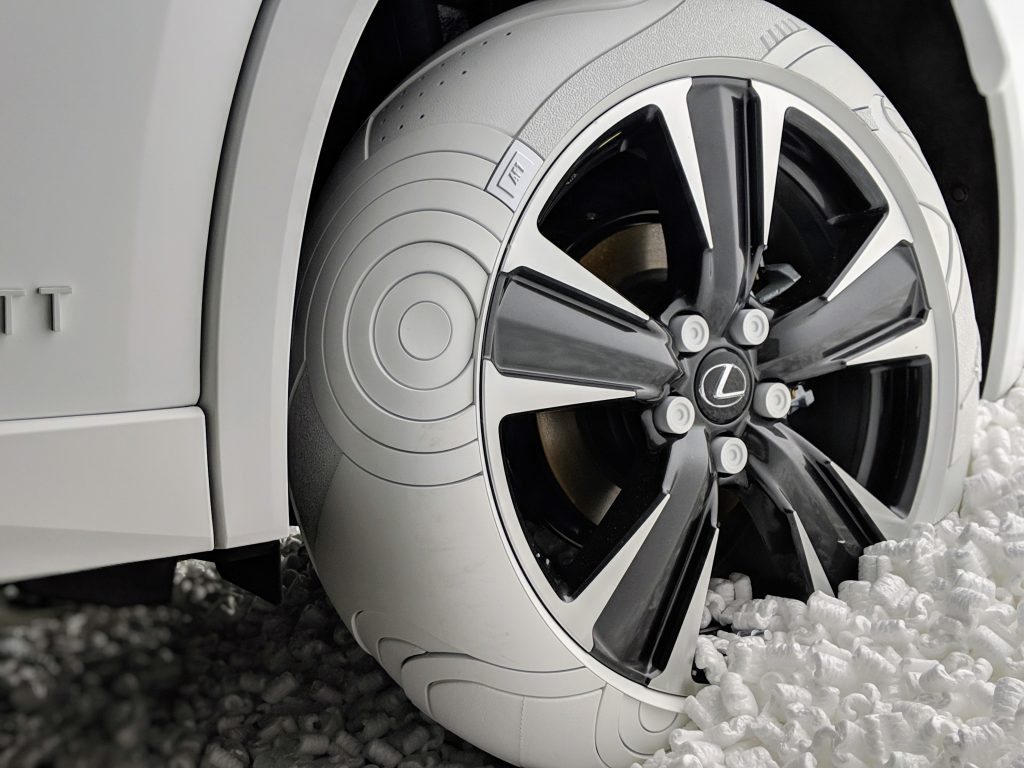Chika Kako, Lexus Chief Engineer, Discusses the First-Ever UX
A manga character helped the design team make the right tweaks to the all-new vehicle

When Chika Kako, the first woman chief engineer at Lexus, saw designs for the brand’s all-new UX subcompact crossover, she thought of childhood days spent watching anime cartoons with her brother. The SUV’s rear lights reminded her of Mazinger Z, a hulking manga robot on the small screen in the late 70’s and early 80’s. It was a good look for an animated character, she thought, but not on the latest addition to the Lexus line-up. “The original shape was really unnatural-looking,” Kako tells us via a translator at the vehicle’s global launch in Stockholm earlier this month. Once she told the all-male design team to soften the aggressive exterior, they got the message. “Simply by mentioning Mazinger, they understood what I meant.”
Then there were the LED headlights, whose inner edges protruded into the sheet metal above. “They looked like they were actually stabbing the hood,” Kako said, bringing her index fingers to the top of her head to mimic antlers. “It was almost as if a deer was aggressively staring at you.”

Perhaps the gaffe could be forgiven. As the luxury subcompact crossover segment swells with new models, from the Hyundai Kona to the Volvo XC40, manufacturers must distinguish themselves with fresh designs. When it arrives in showrooms, the 2019 Lexus UX will need to stand apart from competitors while displaying enough mass appeal to move metal.
Though tame compared to the design team’s earlier prototypes, the SUV’s angular shape still reflects the brand’s 2012 decision to go bolder–marked by a public renouncement of their longstanding reputation for building boring vehicles. The UX shows dramatic sculpting, with flared fenders and short overhangs.

Like other Lexus vehicles, the UX pays homage to takumi, the Japanese design principle that prizes attention to detail. Some trims come with quilted leather embroidered with the traditional Japanese sashiko stitch–the same one used to make martial arts uniforms. Designers also hewed to the principle of omotenashi, which loosely translates to hospitality, but also entails a sense of anticipating and taking care of guests’ needs in advance.
On sale this winter, the UX will come with a 2.0-liter, four-cylinder engine that delivers 168 horsepower or as a 176-horsepower hybrid with electronic all-wheel drive. Buyers can add the F Sport performance package–with black chrome trim, aluminum pedals and paddle-shifters–to either version. Inside, the five-passenger UX comes with leather upholstery, an upgraded infotainment system and plenty of room in both rows.

On our test drive in Sweden, the expansive windshield and slender A-pillars allowed for a clear view despite the UX’s lower, hatchback-like seating position. Designers employed engawa—a Japanese design aesthetic that promotes a connection to nature—to help the cabin integrate with the outdoors. Comparing the UX to a small house with a big window, they molded the UX’s body, which features a continuous line extending to the front fenders, to feel more open to the surrounding environment.
It’s a gentler and, by Kako’s estimation, more appealing profile. She says, “The most important thing is to have a handsome face.”
Images courtesy of Lexus












